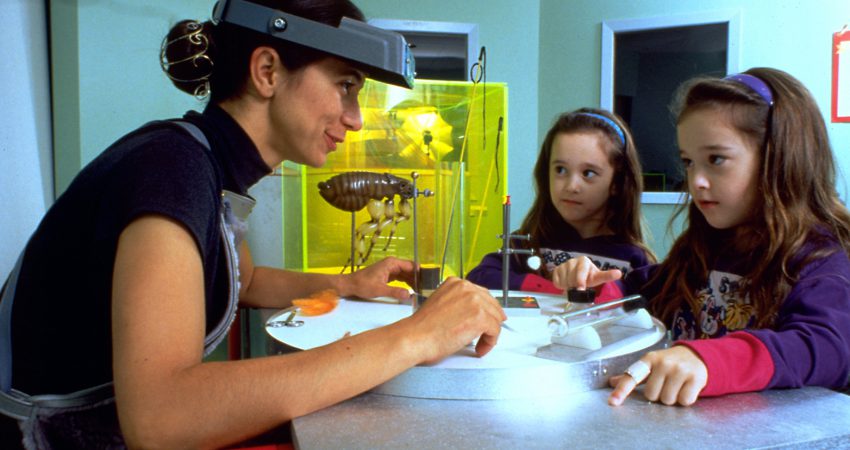
By Melissa Ballard - July 2013
PAPER CITATION
Mallya, A., Mensah, F. M., Contento, I. R., Koch, P. A., & Calabrese Barton, A. (2012). Extending science beyond the classroom door: Learning from students’ experiences with the Choice, Control, and Change (C3) curriculum. Journal of Research in Science Teaching, 49(2), 244–269.
This paper explores how a school-day science and nutrition curriculum, Choice, Control and Change (C3), shaped student thinking, decision making, and actions outside the classroom. The curriculum taught health science content and engaged students in activities focused on analyzing and changing their personal health choices.
Research Design
To study C3’s impact on students, researchers implemented the curriculum in one science classroom in each of two New York City middle schools located in high-poverty areas. Eight students, four from each class, were chosen as case studies. Selected students had a range of academic performance levels and interest in science. An equal number of boys and girls were studied, as the researchers were conscious of the potential for differences in gender-based responses to food and physical activity issues.
For three months, the researchers gathered data using participant observation, student interviews, classroom videos, field notes, and student work. One author assisted in the classroom, helping the instructor implement the C3 curriculum. The researchers drew conclusions by looking at the data set as a whole and grouping the students’ reactions into themes, which the authors then correlated across the many data sources.
The themes represent three main ways that student learning extended outside the classroom and inspired individual change and action:
1. Critique of the food environment Students applied the science practices they learned to reflect on the food choices available to them in their homes and communities. They contrasted the abundance of fast food restaurants and other unhealthy options in their neighborhoods with the lack of healthy and fresh food options, recognizing environmental barriers to healthy eating goals. They also became critical of misleading food packaging and marketing strategies.
2. Purposeful attempts to make healthier choices Using their knowledge of how food affects the body and of what foods are healthful, students set personal health goals. They developed strategies for sticking with their plans despite obstacles such as peer pressure, family habits, and environmental barriers.
3. Pursuit of healthier options for themselves and others Students thought of ways to change their food environments to benefit both themselves and their communities. Ideas included changing the school cafeteria offerings, boycotting fast food restaurants, and petitioning. A major outcome of the C3 curriculum was that students strongly desired to educate their peers, family members, and communities.
In line with the intention of the C3 curriculum, the eight case study students approached these three themes in different ways. The curriculum was designed to allow for personal application of students’ science understanding.
Theoretical Basis
The authors evaluate the ways students extended their learning through the lens of science agency—a capacity or learned skill that integrates scientific practices such as content knowledge and habits of mind with a critical mindset in which students make choices to improve their behavior and their environment.
Starting with a basic sociological definition of agency, the authors build on science education studies addressing science and math agency (Basu, 2008; Basu & Calabrese Barton, 2008; Turner, 2003). Taught critically, these subjects are seen as tools in solving humanistic and real-world problems that connect to students’ everyday lives. The goals of developing science agency include social justice, equity, personal meaning, and student empowerment. The authors argue that science agency is an appropriate interpretive lens for viewing the themes that emerged from their data, because students were developing knowledge and behaviors that would help them reach these goals.
Implications for Practice
Afterschool and informal science educators will be interested in this study because it outlines a diverse set of outcomes from an inquiry-based curriculum that blends science learning with skills that contribute to student success outside the school environment. The findings contribute to an understanding of middle school youth as independent actors and critical thinkers.
Although the C3 curriculum was designed for use in school, it could fit well in an out-of-school time (OST) program—it is inquiry-based and its outcomes align with youth development goals. Curriculum that develops science agency may be used to connect underserved youth, at an age when they are particularly at risk, to a subject from which they are often disengaged. The afterschool field views health and nutrition as important issues on which OST programs can have an effect. Afterschool providers in urban areas, where high rates of youth obesity and disparities in science education prevail, may find this study particularly useful.
The C3 curriculum is the product of a Science Education Partnership Award from the National Institutes of Health, developed within a project called Choice, Control and Change: An Inquiry-Based Science Education Program for Children Overweight. The lead author of this paper was the principal investigator on the grant, and other authors also worked on the project. The grant website contains more information on the curriculum and other relevant research.
References:
Basu, S. J. (2008). Powerful learners and critical agents: The goals of five urban Caribbean youth in a conceptual physics classroom. Science Education, 92(2), 252–277.
Basu, S. J., & Calabrese Barton, A. (2008). Critical physics agency: Further unraveling the intersections of subject matter knowledge, learning, and taking action. Cultural Studies of Science Education, 4, 387–392.
Turner, E. E. (2003). Critical mathematical agency: Urban middle school students engage in mathematics to investigate, critique, and act upon their world. Unpublished dissertation. Austin, TX: University of Texas-Austin.




